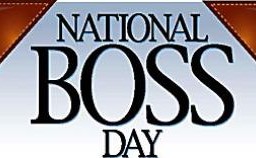Jerry (due to the security nature of his job we are not using his real name) came to my office a victim of the high tech bubble burst in 2003 with an interesting problem. He was a middle manager in his middle 40s and didn’t know how to look for a job. He really never had to look for a job in the past. He had a good reputation and as long as things were going well with high tech start-ups, employers were coming to him.
However, things were no longer going well. He had spent most of his career in aerospace and telecom research and development. By time he came to me, he had spent most of his summer sending out resumes without success.
What Jerry needed from me was coaching on how to target companies and tell his story in a compelling manner–concepts that he’d had no reason to think about very much in the past. He also had to learn where he best fit and what kinds of jobs to avoid. He was quite willing to do all three.
The first thing we did was work on “the fit.” The opportunity of “making a killing” was the main draw to his previous jobs. In retrospect, he realizes they were not good situations because he didn’t ask enough questions. He even described his last job as a “toxic work environment.”
What he really needed was an opportunity to use broad organizational and leadership skills to manage technical projects with some high risks and exciting challenges. He also wanted to work with a “reasonably-sized group,” which he defined as “over 10 people.”
Our next step was to have Jerry increase his networking skills so he could make contacts to find his hidden opportunities–positions he would fit that might not even exist. He did this by creating a spreadsheet of 20 target companies, who the principal players were at each company, if he knew any of them and how to contact someone if he didn’t know somebody at the company.
Next he called each company and wrote into the spreadsheet what they talked about, when to check back and how he had left off the conversation.
Then he would meet with me every two to three weeks and go through what he did. If he was called for an interview, we would go through typical questions and the methodology of answering those questions the day before the interview. We also went through a debriefing during our next meeting after each interview.
Most people go into an interview with the assumption the employers know what they’re doing. Employers are just human beings, too, and they’re subject to all kinds of flaws and weaknesses.
So instead of just answering questions, Jerry had to learn to tell “his story” in a compelling way. People think that when they are being interviewed, they are being interviewed for a job vacancy. If they can communicate their value–Here’s what I bring to the table; here’s what I bring to the company–more than a third of the time, the employer will create a job for them.
It certainly worked for Jerry. After two interviews at major defense contractor for a posted vacancy, the senior managers created another job, one that is a perfect fit for him. He’s in charge of the research for designing most of the surveillance equipment used to protect Canada.
Jerry got the job because he had a coach that helped him stay focused on what he really wanted and then Jerry did the work.











